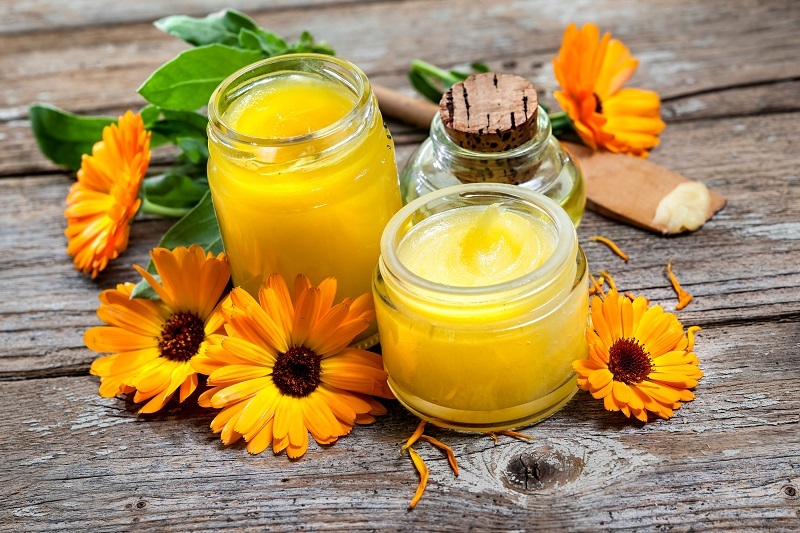Master the Art of Keeping Poinsettias Alive
Posted on 14/08/2025
Master the Art of Keeping Poinsettias Alive: The Ultimate Guide
Poinsettias are famous for their vibrant red and green foliage, heralding the festive season in homes and businesses around the world. But what happens after the holidays end? Too often, these beautiful plants are discarded, thought of as disposable holiday decorations. The truth is, you can keep poinsettias alive year-round with the right knowledge and care. This comprehensive guide will show you how to master the art of keeping poinsettias thriving long beyond the holiday season.
Understanding Poinsettias: More Than Just a Holiday Plant
Poinsettias (Euphorbia pulcherrima) are native to Mexico and Central America, where they can grow as shrubs up to 10-15 feet tall. Despite their popularity as a seasonal houseplant, poinsettias are perennials with the potential for longevity -- if you provide the proper conditions.
- Bracts, Not Flowers: The colorful parts of a poinsettia are actually modified leaves called bracts. The true flowers are the tiny yellow buds at the center.
- Seasonal Color Change: Poinsettias' signature red, pink, or white shades are triggered by changes in daylight hours, not cold weather.
- Sensitive to Environment: These plants are susceptible to drafts, overwatering, and inconsistent light, making proper care essential for their survival.

Setting Up for Success: Choosing and Positioning Your Poinsettia
Start with a Healthy Plant
When aiming to keep poinsettias alive, your efforts begin the moment you select your plant. Follow these tips for choosing the best poinsettia:
- Look for vibrant, firm bracts (the brightly colored leaves.) Avoid plants with wilting, curled, or faded foliage.
- Check the roots by gently lifting the pot (if allowed) - roots should be pale and healthy, not brown or mushy.
- Inspect for pests such as whiteflies or aphids, especially under leaves.
- Avoid plants placed near store entrances or drafts, as cold exposure can cause shock.
The Optimal Spot at Home
Once you bring your poinsettia home, position is critical to ensure it survives and thrives:
- Light: Place your poinsettia in a spot with bright, indirect sunlight for at least 6 hours a day. East or south-facing windows are ideal.
- Temperature: Maintain indoor temperatures between 65?F and 75?F (18?C-24?C). Avoid exposing the plant to temperatures below 55?F (13?C).
- Away from Drafts and Heat: Keep poinsettias away from cold windows, doors, and heating vents, which can cause leaf drop.
Watering Wisdom: Quench Without Drowning
Improper watering is a leading cause of poinsettia death after the holidays. To keep your poinsettia alive and healthy, follow these golden rules:
Assess Soil Moisture
- Only water when the soil surface feels dry to the touch.
- Insert your finger about an inch into the soil. If it feels dry, it's time to water.
Correct Watering Technique
- Thoroughly soak the root ball until water drains out the bottom of the pot. Empty the saucer after 15-20 minutes to prevent root rot.
- Never let the plant sit in standing water. Overwatering can quickly lead to root diseases.
- Avoid letting the soil completely dry out, which can cause leaves to wilt and drop.
Tip: Foil-wrapped pots are festive but can trap excess water. Remove or poke holes in the foil to ensure proper drainage.
Feeding and Fertilizing: Boosting Your Poinsettia's Health
Unlike many short-lived holiday plants, to keep your poinsettia vibrant and alive year-round, you'll need to feed it:
- Type of Fertilizer: Use a balanced, water-soluble houseplant fertilizer (such as 20-20-20 or 10-10-10) after the holiday bloom period ends.
- Frequency: Fertilize every 2-4 weeks from spring through early autumn. Do not fertilize while the plant is in full flower (typically November-December).
- Always water before fertilizing to prevent burning delicate roots.
Pruning and Maintenance: Keeping Poinsettias Alive Long-Term
How and When to Prune
Pruning is vital to encourage bushy, healthy poinsettia growth and prepare for another year of beautiful blooms.
- After Bloom: In late winter or early spring (February/March), cut back stems to 4-6 inches above the soil. This encourages new shoots and a fuller plant.
- Pinching: In early summer, pinch back new growth every 4-6 weeks to promote branching--stop pinching by late August to allow flower buds to form.
- Always use clean, sharp scissors or pruning shears.
Re-Potting Your Poinsettia
Poinsettias outgrow their original pots. Healthy poinsettia plants often benefit from repotting in late spring:
- Select a container 1-2 inches larger than the current pot, with adequate drainage holes.
- Use high-quality, well-draining potting mix (not garden soil).
- Handle roots gently to minimize stress.
Encouraging Re-Bloom: How to Make Poinsettias Reflower
Many gardeners struggle with making their poinsettia bloom again for the following winter. The secret lies in mimicking the plant's native light cycle:
The Critical Dark Period
- Beginning in late September or early October, your poinsettia must experience at least 14 uninterrupted hours of complete darkness every night for 8-10 weeks.
- Cover your plant with a box or place it in a dark closet from early evening (around 5 p.m.) until morning (after 7 a.m.).
- During the day, return the poinsettia to its sunny spot for bright, indirect light.
- Even brief exposure to artificial light during the "dark period" can prevent blooming.
Temperature and Watering During Bloom Induction
- Maintain temperatures around 60-70?F (16-21?C).
- Continue to water and fertilize normally, but avoid overwatering.
By Thanksgiving, you should notice colored bracts forming. Your poinsettia will brighten your home just in time for the holiday season!
Troubleshooting: Common Poinsettia Problems and Solutions
Why Are My Poinsettia Leaves Dropping?
- Overwatering or under-watering: Adjust your watering frequency and ensure proper drainage.
- Cold drafts or temperature swings: Move your plant to a more stable, warm environment.
- Insufficient light: Relocate to a sunnier spot.
- Pest infestations: Check for small flying insects and treat with insecticidal soap if necessary.
Pest and Disease Issues
- Whiteflies, aphids, and mealybugs: Use gentle sprays of water, insecticidal soap, or neem oil.
- Fungal disease or rot: Prevent by providing good air circulation, only watering when needed, and never allowing soil to remain soggy.
Frequently Asked Questions: Keeping Poinsettias Alive
- Are poinsettias toxic to pets?
While not highly toxic, poinsettias can cause mild stomach upset in dogs and cats. Keep out of reach of curious animals. - Can poinsettias live outdoors?
In warm climates (USDA zones 9-11), poinsettias can be planted outside. In colder areas, keep them as houseplants. - How long can a poinsettia live?
With proper care, poinsettias can live for years and rebloom each winter! - Do poinsettias like humidity?
Yes, moderate humidity (40-60%) is ideal. Mist foliage occasionally or use a humidity tray during dry months.
Myths & Facts: The Truth About Poinsettia Care
- Myth: Poinsettias are only for the holidays.
Fact: They are perennials and can be enjoyed year-round! - Myth: Poinsettias are difficult to keep alive.
Fact: With basic knowledge about their needs, you can master the art of caring for poinsettias. - Myth: It's impossible to make them bloom again.
Fact: The right dark/light cycle will reward you with festive color year after year.
Poinsettia Care Calendar: Month-by-Month Guide
- December - January: Enjoy your plant's colorful display. Keep soil slightly moist and place in bright light.
- February - March: Colors fade; prune back stems to 4-6 inches above soil. Reduce watering and allow the plant to rest.
- April - May: Resume normal watering. Optionally, re-pot your poinsettia into fresh soil.
- June - August: Fertilize every 2-4 weeks. Place outdoors in filtered light if temperatures stay above 60?F. Pinch new growth.
- September - November: Begin the "dark period" each evening to initiate blooming. Continue watering and fertilizing as usual.

Conclusion: Become a Poinsettia Pro!
With this in-depth guide, mastering the art of keeping poinsettias alive is within your reach. From selecting and positioning your plant, giving the right water and fertilizer, to skillfully encouraging a repeat bloom, a lush, happy poinsettia is possible year after year. Whether you're a seasoned plant parent or new to indoor gardening, these proven care methods and troubleshooting tips will help you grow not just a holiday decoration, but a living centerpiece for every season.
Don't just toss your poinsettia after the festivities end. Cherish and nurture it, and your rewards will be vivid foliage and festive cheer for years to come!
Additional Resources
- National Gardening Association: Poinsettia Care Guide
- University Extension Offices: UW-Madison Poinsettia Advice
- American Society for Horticultural Science: ashs.org
Are you ready to master the art of keeping poinsettias alive? Try these tips and watch your poinsettia thrive!
Latest Posts
The Ultimate Five Flowers to Gift on a Memorable Valentine's Day
Master the Art of Keeping Poinsettias Alive
The Romantic Legacy of Valentine's Red Roses





